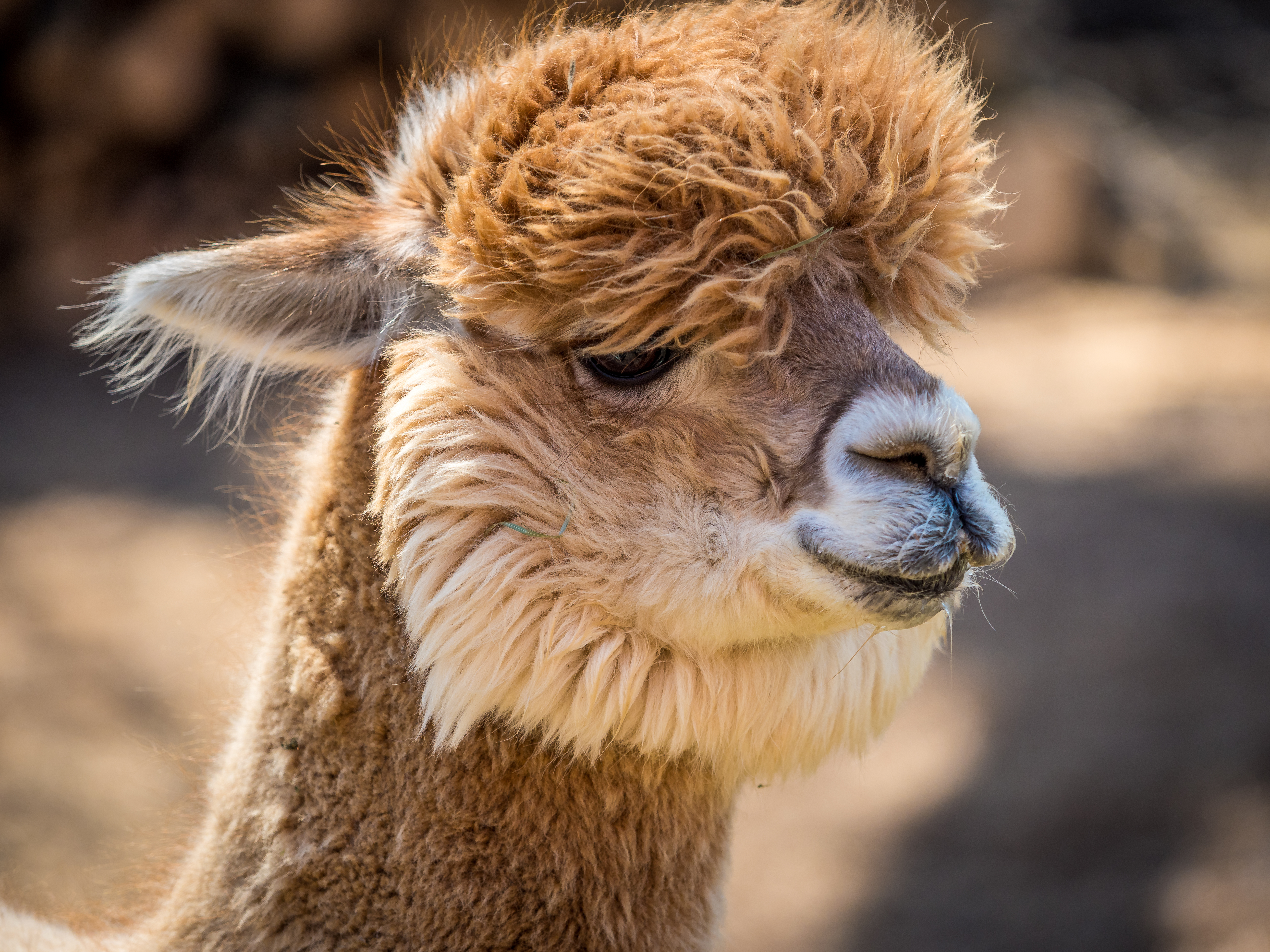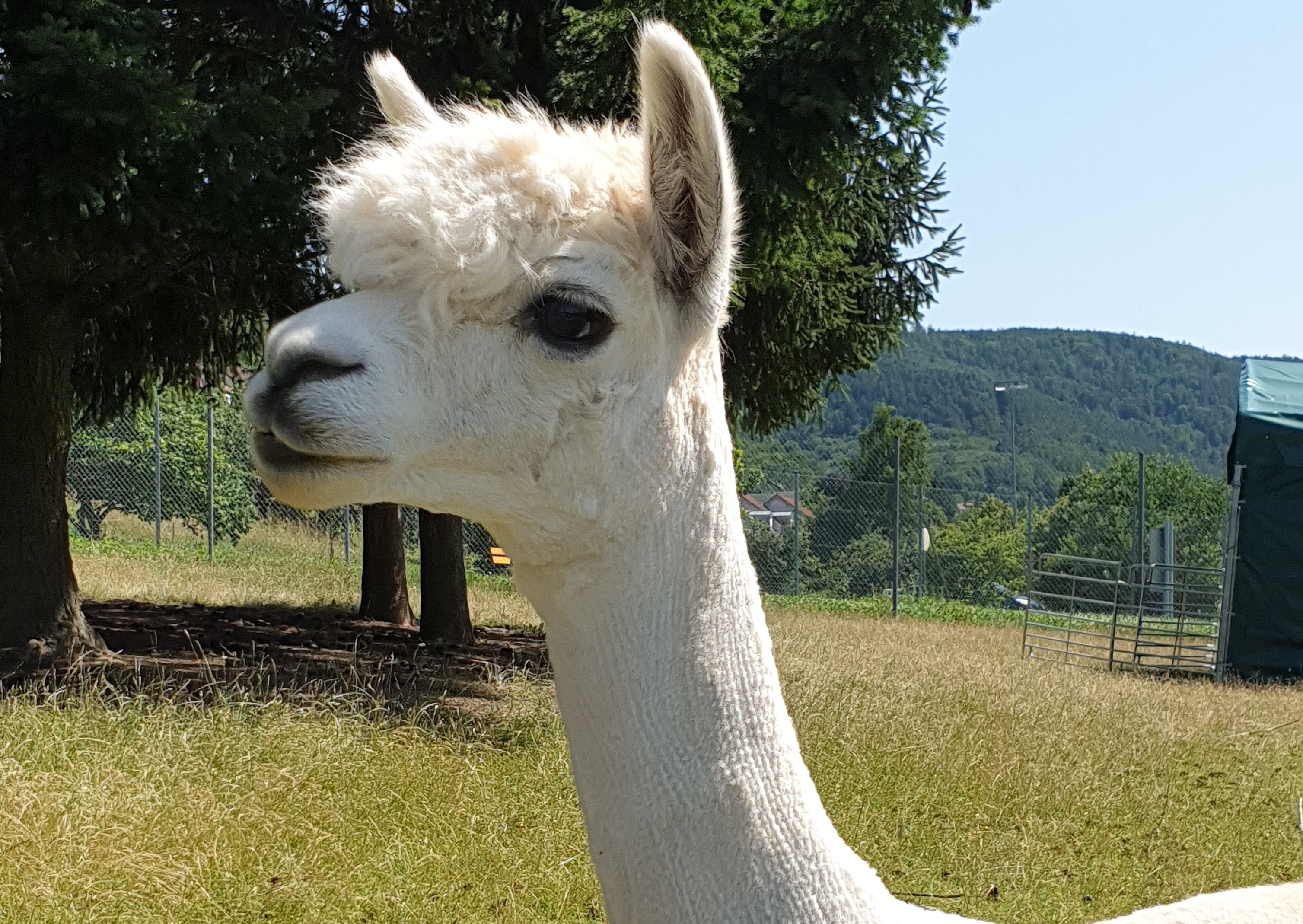More than just spit
Alpacas are domestic animals bred for wool production. They belong to the order of cloven-hoofed animals and are part of the camel family. Strictly speaking, they are so-called small camels.
The wool of alpacas is perennial and must therefore be shorn once a year. The species from which the small camels, which originate from South America, are descended is still disputed. In their homeland, they inhabit semi-deserts, grasslands, steppes and mountainous regions.
Alpacas are closely related to llamas, but with a maximum weight of 80kg and a shoulder height of 80-100cm, they are significantly smaller and lighter. Another distinguishing feature is their ears: the alpaca's ears are small and pointed, while the llama's are large and curved. Furthermore, alpacas have a bushy hair growth directly on the head, whereas llamas have a shorter hairy head. The back of alpacas appears somewhat rounder than that of llamas, which is partly due to the fact that the base of the alpaca's tail is slightly lower.
The small camels live socially in herds with a stallion, mares and their young. However, if there is food envy or hierarchy disputes in the group, they spit on each other with regurgitated stomach contents. They always aim at the eyes of their opponent to restrict their field of vision. However, the spitting does not come out of the blue, so the animals first warn each other by covering their ears.


